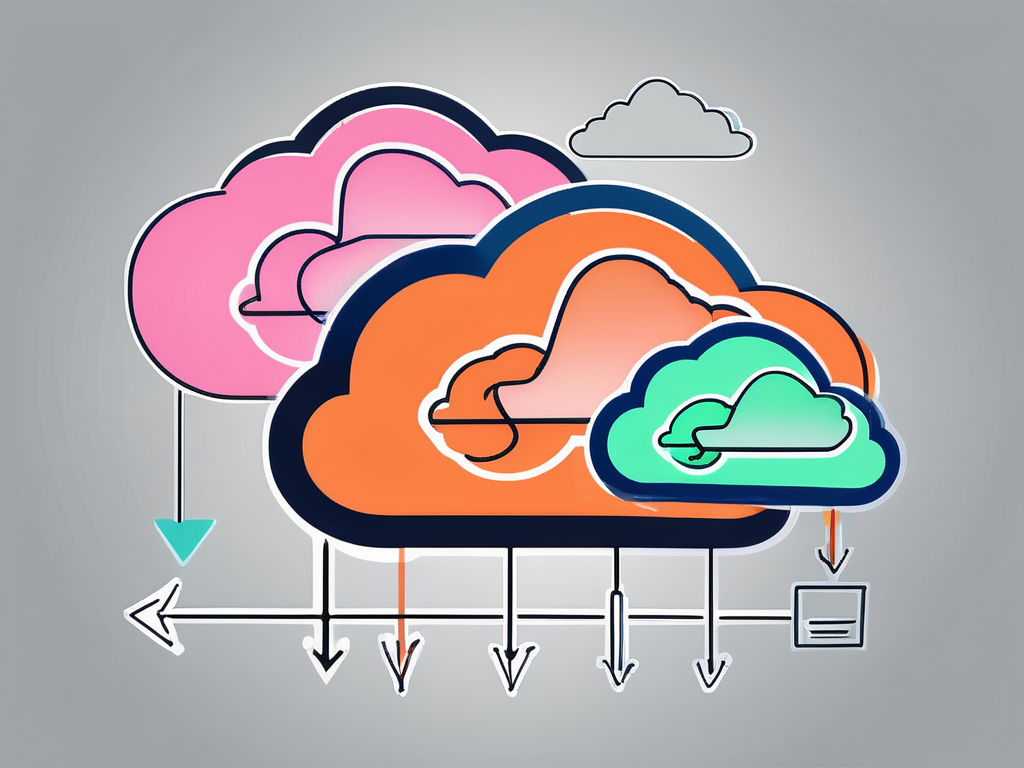In this article, we will explore the process of changing PHP version in Cloudways, a popular cloud hosting platform. PHP is a server-side scripting language used for developing dynamic websites and applications. By keeping your PHP version up to date, you can ensure compatibility with the latest frameworks and security patches. So, let’s dive into the step-by-step process of changing PHP version in Cloudways.
Understanding PHP Versions
Before we begin, let’s briefly discuss the importance of PHP versions and the different options available. PHP versions play a crucial role in determining the performance and functionality of your applications. Each PHP version has its own set of features and improvements, along with potential compatibility issues.
Importance of PHP Versions
Using the latest PHP version allows you to take advantage of improved performance, security enhancements, and bug fixes. It ensures that your website runs smoothly and efficiently, providing a better user experience. Upgrading to the latest PHP version also helps protect your website from potential security vulnerabilities that may exist in older versions.
Another important aspect of PHP versions is compatibility. Some frameworks and libraries require specific PHP versions to function properly. By keeping your PHP version up to date, you ensure that you can leverage the latest features and improvements of these frameworks and libraries, maximizing the potential of your applications.
Different PHP Versions Available
Cloudways offers a range of PHP versions to choose from, including PHP 7.4, PHP 7.3, PHP 7.2, PHP 7, and PHP 5.6. Each version has its own strengths and compatibility considerations.
PHP 7.4 is a stable release and offers significant performance improvements over previous versions. It introduces features like typed properties, arrow functions, and preloading, which can enhance the speed and efficiency of your code.
PHP 7.3 brings improvements in error handling, flexible heredoc and nowdoc syntax, and support for negative string offsets. It also includes enhancements to the garbage collector and introduces the sodium extension for modern cryptography.
PHP 7.2 introduces features like the Argon2 password hashing algorithm, support for HTTP/2 server push, and the new sodium extension for improved security. It also includes performance optimizations and bug fixes.
PHP 7 is a major release that brings significant performance improvements and new features like anonymous classes, scalar type declarations, and return type declarations. It also removes deprecated features, ensuring that your codebase remains up to date.
PHP 5.6 is the last version in the PHP 5 series and is still widely used. It includes improvements in performance, security, and language features. However, it is important to note that PHP 5.6 is no longer actively supported and does not receive security updates, so it is recommended to upgrade to a newer version.
When considering a PHP version change, it is recommended to consult the documentation or support forums of your specific framework or application. This will help ensure compatibility and avoid any potential issues that may arise from upgrading or downgrading PHP versions.
In conclusion, understanding PHP versions and their importance is crucial for maintaining optimal website performance, security, and compatibility. By staying up to date with the latest PHP version and considering the specific needs of your applications, you can ensure that your website runs smoothly and efficiently, providing the best experience for your users.
Preparing for PHP Version Change
Before you proceed with changing the PHP version, there are a few steps that you need to take to ensure a smooth transition.
Changing the PHP version of your website is an important process that requires careful planning and execution. By following the steps outlined below, you can minimize the risk of encountering any issues during the version change.
Checking Current PHP Version
The first step is to check the current PHP version of your Cloudways hosted application. This information can typically be found in the Cloudways management panel or by accessing your server via SSH. Knowing the current PHP version will help you understand the changes you will encounter after the update.
Once you have identified the current PHP version, it is essential to research and understand the differences between the current version and the version you plan to upgrade to. This will help you anticipate any compatibility issues or deprecated features that may affect your website.
Additionally, it is recommended to review the release notes and documentation provided by the PHP development team. These resources often contain valuable information about the changes and improvements introduced in each PHP version.
Backing Up Your Data
It is always recommended to backup your data before making any significant changes to your application. This includes both the files and databases associated with your website. Having a backup ensures that you can revert back to the previous state if any issues arise during the PHP version change process.
When creating a backup, it is important to consider the size of your website and the amount of data that needs to be backed up. Depending on the size, you may choose to use a cloud storage service, an external hard drive, or a combination of both.
Before proceeding with the backup, it is advisable to perform a thorough check of your website’s files and databases. This will help identify any existing issues or inconsistencies that may affect the backup process or the functionality of your website after the version change.
Once the backup is complete, it is crucial to verify its integrity by restoring a small portion of the data to ensure that the backup is usable and accurate. This step provides an additional layer of protection and peace of mind.
Steps to Change PHP Version in Cloudways
Now that you have completed the necessary preparations, let’s move on to the step-by-step process of changing the PHP version in Cloudways.
Accessing Server Management
Log in to your Cloudways account and navigate to the server management panel for the application you want to modify. Here, you will find various settings and configurations related to your server.
Navigating to Settings & Packages
In the server management panel, locate the “Settings & Packages” tab. Clicking on this tab will present you with several options, including the ability to change the PHP version.
Changing PHP Version
Within the “Settings & Packages” tab, you will find an option to change the PHP version. Select the desired version from the available options and save the changes. Cloudways will automatically apply the PHP version change to your server.
Post-Change Considerations
After successfully changing the PHP version, there are a few things you should verify and address.
Verifying PHP Version Change
To ensure that the PHP version change has been successfully applied, you can check the PHP version of your application either through the Cloudways management panel or via SSH. Make sure that the new PHP version matches your desired choice.
Troubleshooting Common Issues
In some cases, changing the PHP version may lead to compatibility issues with your existing codebase or dependencies. If you encounter any errors or unexpected behavior after the PHP version change, consult the framework or library documentation, or seek assistance from the Cloudways support team.
Maintaining Your PHP Version
Updating your PHP version shouldn’t be a one-time task. It is essential to maintain your PHP version regularly to ensure compatibility and security.
Regularly Checking for Updates
Cloudways frequently releases updates to PHP versions to incorporate bug fixes, security patches, and performance improvements. It is recommended to periodically check for updates and upgrade to the latest stable version when available. This will ensure that your website or application stays up to date and secure.
Understanding When to Upgrade PHP Version
While staying up to date with the latest PHP version is important, it’s equally necessary to consider the impact on your existing codebase. Before upgrading to a new version, thoroughly test your application and ensure it remains compatible with the updated PHP version. In some cases, you may need to make necessary adjustments or rely on updated versions of third-party libraries.
FAQs
Q: Can I revert to the previous PHP version if I encounter issues after changing?
A: Yes, you can revert to the previous PHP version if you encounter compatibility issues or unexpected behavior after making the change. Simply follow the same steps mentioned earlier and choose the previous PHP version from the available options.
Q: Will changing my PHP version affect my website’s database?
A: Changing the PHP version should not directly impact your website’s database. However, it is always recommended to backup your database before making any significant changes to your application, including PHP version updates.
Q: Do I need to manually update my PHP code after changing the PHP version?
A: In most cases, you do not need to update your PHP code after changing the PHP version. However, it is always good practice to review your code and test your application thoroughly after any significant changes to ensure everything functions as expected.
Q: Can I change the PHP version anytime I want?
A: Yes, you can change the PHP version anytime you want, provided you have the necessary permissions within your Cloudways account. However, it is recommended to perform the change during periods of low traffic or after thoroughly testing your application for compatibility.
Conclusion
Changing the PHP version in Cloudways is a straightforward process that can bring significant benefits to your website’s performance, security, and compatibility. By following the steps outlined in this article, you can easily update your PHP version and ensure that your application remains up to date and compatible with the latest technologies. Remember to regularly check for updates and perform necessary tests to guarantee a smooth transition. Happy coding!
Ready to Upgrade Your PHP Version?
If you’re looking to enhance your website’s performance and security, now is the perfect time to upgrade your PHP version with Cloudways. As a top-rated marketing agency with over two decades of experience in web design and digital marketing, NW Web Design & Digital Marketing understands the importance of staying current with technology. Click here to get started with Cloudways and take the first step towards a more efficient and secure online presence.

